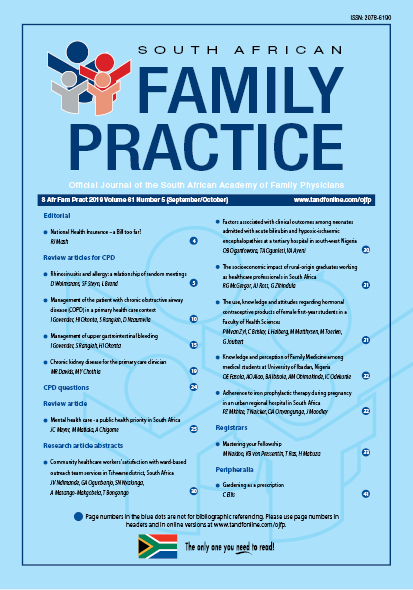Factors associated with clinical outcomes among neonates admitted with acute bilirubin and hypoxic-ischaemic encephalopathies at a tertiary hospital in south-west Nigeria
Abstract
Background: Babies who are delivered outside hospital are most at risk of serious illnesses such as perinatal asphyxia and severe hyperbilirubinaemia. These conditions are major contributors to neonatal mortalities in resource-poor settings.
Objective: To explore the relationship between pre-admission and intra-facility care and immediate outcomes among neonates with acute bilirubin and hypoxic-ischaemic encephalopathies.
Methods: Using a retrospective design, the outcome of outborn babies with acute bilirubin encephalopathy (ABE) and hypoxicischaemic encephalopathy (HIE) were studied in a Nigerian hospital between 2012 and 2016.
Results: A total of 40 and 80 babies with ABE and HIE were studied. Among babies with ABE, 67.5% arrived at the hospital on selfreferral and of the babies with official referral, only 61.5% had had a serum bilirubin check prior to referral. Among the babies with ABE, 25.0% had both social and facility-related challenges, 45.0% had only facility-related challenges and 20.0% had only social challenges. All the babies with ABE who died had either social or facility-related challenges. For the babies with HIE, 56.2% came on self-referral while 70% received no care prior to presentation at the hospital. Some 40% of babies with HIE had both social and facility related challenges while 12.5% had only facility-related challenges. None of the babies who died presented early. Comparable proportions of babies who died or survived had social challenges and facility-related challenges.
Conclusion: Most of the outborn babies with HIE and ABE who arrived at the hospital on self-referral and facility-based care were hindered by social issues and facility-related challenges.
The full articles is available at https://doi.org/10.1080/20786190.2019.1622857

